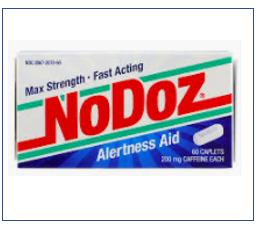
I recently wrote about two products, both Lysol sprays, which got the nod from the EPA to make an anti-COVID claim, but noted that there were multiple products on the market that contained essentially the same (1) two active ingredients - alcohol and quaternary ammonium compounds. The only difference between the two Lysol sprays and the rest of them is that Reckitt Benckiser, the company that sells Lysol products, specifically tested Lysol Disinfectant Spray (EPA Reg No. 777-99) and Lysol Disinfectant Max Cover Mist (EPA Reg No. 777-127) against SARS-CoV-2, the virus that causes COVID-19, and demonstrated that it killed the virus on hard surfaces in minutes. But what about soft or porous surfaces? Or other cleaning/disinfecting products?
Should you be in the mood for self-flagellation there is an EPA database called List N Tool: COVID-19 Disinfectants, which contains 470 different products, their ingredients, and what they do and do not kill. It's a bona fide pain in the ass to use, but with a little futzing around, I was able to export it to an Excel sheet, do some sorting and answer some questions, and demonstrated yet once again that I am willing to take one for the team (2).
Here is some possibly useful information about the cleaning products. But before you try the rest of this tripe, I suggest you get prepared first...

OK, don't say I didn't warn you.
- The EPA states "All products on this list meet EPA's criteria for use against SARS-CoV-2, the virus that causes COVID-19. These products are for use on surfaces, NOT humans." (3)
- Of the 470 disinfectants, 468 were listed for use on hard, non-porous surfaces. Only two disinfectants, both laundry detergents, were listed for use on porous surfaces.
- 170 of the disinfectants can be used on food, either with or without post-exposure rinsing being required.
- The time required to kill the virus ranged from 15 seconds (Clorox Spruce Ups) to 30 minutes. Most required 5-10 minutes.
- The most common disinfecting chemicals (207 of the 468) were quaternary ammonium compounds (cationic detergents).
- Other common disinfecting chemicals were sodium hypochlorite (68) and hydrogen peroxide (66).
- Five contained silver, which would make them useless except for the fact that they also contained actual disinfectants like hydrogen peroxide.
- One of these five Peradox HC Solution Part A contained the active ingredient "Silver 00.03%," which is perplexing because you and I both know that this isn't going to disinfect anything. A little poking around revealed that (shockingly) there was something called Peradox HC Solution Part B, which contains whopping amounts of hydrogen peroxide (22%) and peroxyacetic acid (16%) - real disinfectants. I can only speculate that the purpose of the silver is to put some silver in the pockets of sBioMed, LLC. The company received a Stop Sale letter from the FDA in 2015 for "different" products, Steriplex SD Part A and B. This was because "sample products that were provided by a hospital were tested by EPA, and the results showed that the products were ineffective against C. diff." What were the ingredients in Steriplex? Silver, hydrogen peroxide, and peroxyacetic acid. Hmm.
- 305 of the products contained an "emerging pathogen" claim on the label. This does not mean that these disinfectants have been shown to kill COVID, just that based on the ingredients contained they are scientifically likely to kill it.
It should be noted that although this information may be helpful, it is less so than we thought six months ago when stores were emptied of anything that could be used to sanitize surfaces. You were more likely to find a chest of gold doubloons on the shelf of CVS than a bottle of isopropyl alcohol. Although there is still much that isn't known about the coronavirus we do know that the virus isn't easily spread from surface contact.
But, feel free to scrub away nonetheless. It's more fun than reading stuff like this. Then again, so is angioplasty.
NOTES:
(1) Quaternary ammonium salts are a large group of chemicals, not a single one. The ones used in disinfectants have slightly different properties and are routinely mixed. There could be dozens of these "quats" in a single product.
(2) I also accept bearer bonds, given the unlikely chance that someone would choose to send some.
(3) Isn't it pathetic that stuff like this needs to go on a label? I'm drowning in morons.



